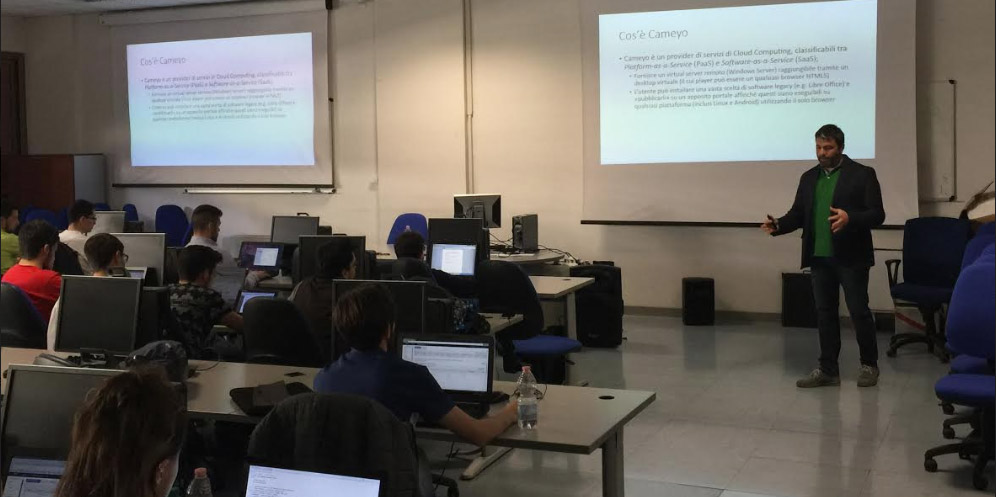In the heart of Rome, University of Rome La Sapienz – the oldest and largest university in the capital is at the frontier of STEM education. Students graduating from the school of Information Technology Engineering and Statistics move into organizations in both the public and private sectors, applying their practical and well-rounded knowledge of some of the most advanced IT concepts and methods.
In the program, the students not only learn about technology, they use it – acquiring insight as to the rationale, skills and applications of technology for different IT and Information Systems environments. They learn how to use big data and decipher it with analytics tools needed for risk management, supply chain, customer experiences, business performance optimization and more. In the second year of the program, students take the Introduction to Cloud Computing course.
In this course, educator Dr. Luigi Catuogno shares practical guidance to understand what is, and what isn’t, a cloud environment. Helping students learn to spot organizational need and pragmatically assess the different options is a critical part of how best to evaluate cloud services and those that provide them.
Amongst the materials covering everything from the origins of Cloud Computing, and how it relates to Grid Computing, to the various deployment models, security and virtualization scenarios – Dr. Catuogno talks about Google Apps, Cameyo, and Amazon AWS EC2. He uses these three provider technologies to clearly delineate Software as a Service (SaaS), Platform as a Service (PaaS) and Infrastructure as a Server (IaaS), respectively.

“I want the students to understand the entire process, so we work through this progression of specific cloud service providers,” says Dr. Catuogno. “As they move from one to the next, they gain first-hand experience with increasingly sophisticated IT related skills.”
By addressing these specific cloud technologies, students learn how the level of IT knowledge changes moving from SaaS, PaaS and IaaS. Simplified, this can be described as:
- SaaS with Google Apps – Creating and sharing content over the Cloud. For example, Google Drive/Google Docs. To use a Google App, all that is required is an end-user skill set.
- PaaS with Cameyo – Deploying and publishing applications in the Cloud. Using Cameyo, students learn the principles of IT administration. With no prior experience needed, they point and click their way through access policies, server settings, and other organizational IT rules to cloud-enable Windows apps.
- IaaS with Amazon AWS EC2 – Creating and managing a virtual machine within Amazon’s cloud. Working through IT application deployment and data sharing with VMs gives students a taste of more advanced skills, those often held by IT Network Engineers and Cloud Compute Architects.
Dr. Catuogno specializes in making complex topics simple. “I chose Cameyo because it was easy for unskilled course participants to use it to set up cloud services for applications. Cameyo is very straightforward, even for the uninitiated.”
The mix of theory and experience that Dr. Catuogno shares with his class helps solidify the grounding necessary for evaluating and understanding cloud services. How to best utilize the cloud, and how best to migrate legacy applications, is key to virtually all IT departments today. From the oldest school in this ancient city – which is world renowned for art, history, and culture – it’s inspiring to see students also being taught the science of big data and the critical skills for the next era of innovation.
Are you ready to innovate in the Cloud? If you have Windows applications that are holding you back, why not run a free trial with Cameyo? It might very well be what your team needs to migrate your legacy.
